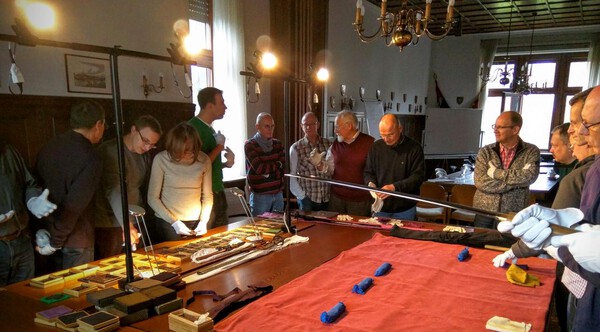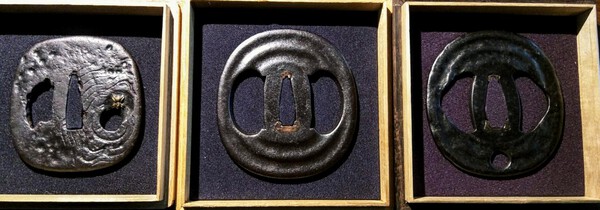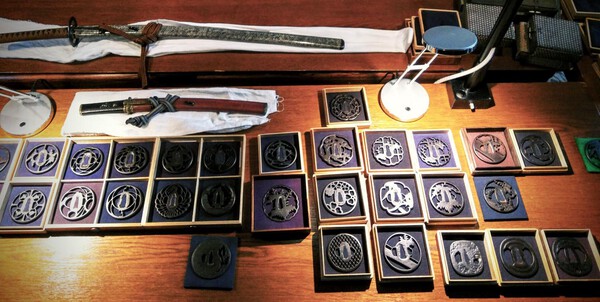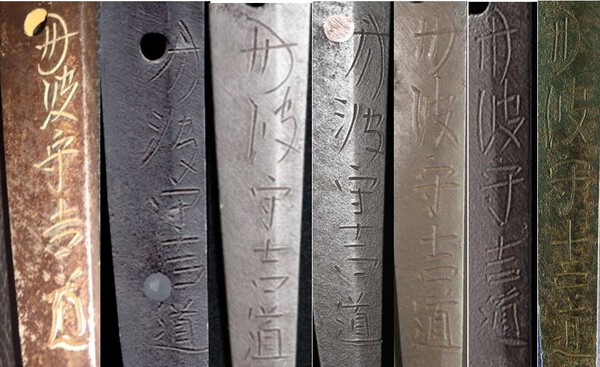-
Posts
1,101 -
Joined
-
Last visited
-
Days Won
5
Content Type
Profiles
Forums
Events
Store
Downloads
Gallery
Everything posted by DirkO
-
RIP Herr Hagenbusch - I'll fondly remember the few times we really had a chance to talk at the Bonn meetings. His kantei explanations were always something special. As already mentioned, he would talk unprepared about each kantei bid and tell them where they went wrong, but always in a very educational manner. A true gentleman and a scolar of the highest level, one of very few who actually did their sword studies in Japan at the museum.
-
Back to the OP: I think we have to keep in mind that the papers are stating something is "worth preserving". Is a newly made sword of a living smith worth preserving? Not really, I can order a new one tomorrow. Once the smith dies, the number of swords by him suddenly is limited and as such, we need to preserve them. Seeing for modern smiths there are usually quite some of swords extant, NBTHK focusses on the better ones (ie, flawless, typical work,...) For older smiths there are less extant works, and so the rules are less stringent.
-
Just a quick review on the book - although the translation isn't 100% perfect at least there is one and it's actually quite good! It's built up out of chapters: 1 - KoBizen Mono 2 - Ichimonji School 3 - Osafune School (Kamakura) 4 - Osafune School (Nambokucho) 5 - Kozori Mono 6 - Osafune School (Muromachi) I'm glad to see they finally made an effort for the Kozori school, seeing it's usually a bit overlooked and underestimated. The book is a nice size hardcover and very pleasant to leaf through. Very nice picture quality, you can really assess the hada. Most of them are also accompagnied by an oshigata. There's an English introduction by Taeko Watanabe and translated by Piers D. - a short 1 page glossary and an English list of all 73 items portrayed. All in all a quality publication, although some minor details got lost in editing (read earlier posts)
-

Bonn 14.11.2015
DirkO replied to CSM101's topic in Sword Shows, Events, Community News and Legislation Issues
Yes, it was a very nice meeting where members got to bring their own swords, not a real theme. The tsuba part was Edo Sukashi by Prof Kremers. Sadly I had to leave early due to conflicting appointments, but allow me to add some more pictures! -
Here's a side by side of your signature compared to the 1st 6 generations (papered authenticated examples). All the signatures are saying the same thing, but see how each has their own little peculiarities? I'm sorry to say that the signature on your blade, doesn't even come close to these. You can always send it to Japan for authentication papers, I'll gladly be proven wrong!
-
No this is in my opinion Osaka-Tamba 3rd generation, but then again, that is my blade :-) (currently being polished) Yours doesn't match any of the Kyo-Tamba smiths I have on file. I don't think the mei is correct, but I'll have a look through my books when I get home.
-

The Naoe Shizu That Was A Masamune
DirkO replied to Jim P's topic in Auctions and Online Sales or Sellers
The Hon'ami papers are fake. Doesn't even come near normal Hon'ami Koson papers. However, this can't be blamed on Tsuruta-san, people sometimes regard these papers as being a nice add on, nothing more. Compared to real examples: -
If I'm correct fittings shinsa is this month and combined Hozon+TH is next month. For the exact dates I suggest you contact Paul Martin, he'll know.
-
Not really Henk, as Grey said we should keep our opinions to ourselves. Because if you post something, it might hurt the sale price. If you have remarks about something for sale, it's best to PM the seller and let him decide, period.
-
What do you mean "not perfect" - Nothing wrong with "gold inalay" :-) I even had to look up 'redolent' - didn't know that was an actual word! I understand your frustration, but nevertheless it seems like a very worthwhile publication.
-
Didn't know that, Geraint - thanks! I stand corrected.
-
German Volvo? Those will indeed be hard to find. Swedish Volvo on the other hand.... ????????????
-
http://www.nihontomessageboard.com/links.html
-

Bizen Kozori Moriyasu O-Tanto, Nambokucho, Cheap
DirkO replied to Marius's topic in For Sale or Trade
Congrats John! Good thing too - I was really torn over this one, but I've already gone over budget with some other purchases recently :-) Thanks for putting me out of my misery! -

Bizen Kozori Moriyasu O-Tanto, Nambokucho, Cheap
DirkO replied to Marius's topic in For Sale or Trade
Very very tempted. Not a lot is known about Kozori school, they're an undervalued/underappreciated lot. They made some really good pieces. -
Hi Alan, Indeed, Miyamoto Kanenori and Gassan Sadakazu received their title "Teishitsu Gigei-in" (帝室 技芸員) in 1906. I can't see the whole date on the picture... Just ju and go, so what comes before that? But reading the reviews on Amazon from some of our members and then this, I think this book was rushed to publication.
-
Arnold makes a very strong and logical point, so I'll adjust my view ???? The motto of the round table:adopt, adapt, improve!
-
Congrats on the new expansion, very worthwhile tsuba indeed! However, maybe you should rename it to High Level Kodogu or something similar? Adding a price could be somewhat confrontational to potential buyers. Just my personal opinion.
-
Just one more: Gustav Jacoby wrote in his "Japanische Schwertzieraten: Beschreibung Einer Kunstgeschichtlich Geordneten" Tokujo, der Sohn des Kojo, arbeitet weiter im Sinne des Vaters, doch ist sein Stil insofern verschieden, als er meist seine Reliefs sch"rfer und h"her geschnitten hat. Gern benutzt er bei seinen Arbeiten die Goldplattierung mit Durchreibung, womit er sehr interessante Effekte zu erzielen wei". Als erster verwendet er auch das Kupfer als Einlage und nach Ausspruch von Kennern auch das Shibuichi. If my German is still up to scratch, it says that "He was the first used copper as a deposit, and according to connoisseurs also shibuichi" - his sources will have been the same as Mosle's. Pity he doesn't go further into this.
-
And there's this (written by Alexander Mosle - so maybe his collection might hold pieces with shibuichi from Tokujo? - don't have the Mosle book) http://www.shibuiswords.com/gotoshirobei.htm "The Author mentioned orikami. These originated with Tokujo, who, in fact, was the first to certify the work of his predecessor and sign them with their names, as well as being the first Goto to use Shibuichi." And here's an attributed Tokujo piece: http://blog.goo.ne.jp/tsuba_001/e/e1c2dbd9df524b49621daaa8ba938a5a
-
The description of kuro shibuichi also comes from Ito's book, - the Nishigaki volume (page 28, annotation 23 at the bottom in the translation by Markus)
-
-
How about Kuro Shibuichi? "This is a sort of shibuichi (literally „black/dark shibuichi“), where the copper is added additionally with arsenic, to achieve a more darker grey wich sometimes can also get a slightly green colouring. " Was used early throughout several Higo schools. In Ito's Nishigaki book there's also mention of a handwriting by Kanshiro II (1639-1717) from his study period with Goto Teijo (approx. 1653-1663) (. This also mentions Shibuichi. Looking at the actual working time for Kanshiro the 2nd, the time when he studied with Goto Teijo well predates the 1700's. However if it was made late in his active career, it might be later than your earliest date.
-
Yep, I think the incense burner idea is better, the similarities are far greater.
-












